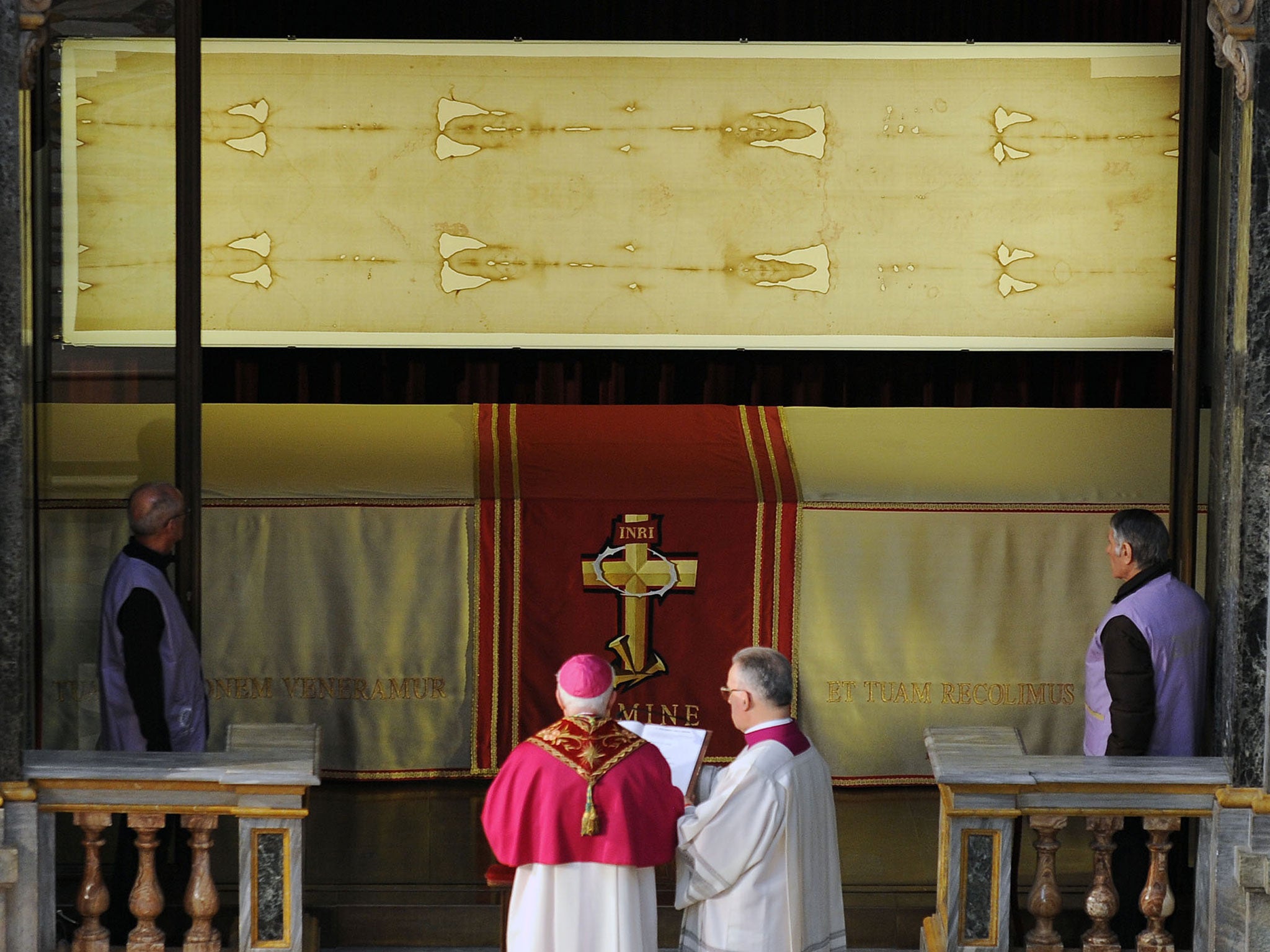Shroud of Turin 'stained with blood from torture victim', find researchers
'Our results point out that at the nanoscale a scenario of violence is recorded in the funeral fabric'

Your support helps us to tell the story
From reproductive rights to climate change to Big Tech, The Independent is on the ground when the story is developing. Whether it's investigating the financials of Elon Musk's pro-Trump PAC or producing our latest documentary, 'The A Word', which shines a light on the American women fighting for reproductive rights, we know how important it is to parse out the facts from the messaging.
At such a critical moment in US history, we need reporters on the ground. Your donation allows us to keep sending journalists to speak to both sides of the story.
The Independent is trusted by Americans across the entire political spectrum. And unlike many other quality news outlets, we choose not to lock Americans out of our reporting and analysis with paywalls. We believe quality journalism should be available to everyone, paid for by those who can afford it.
Your support makes all the difference.The Shroud of Turin is stained with the blood of a torture victim, scientists have claimed.
Analysis of the linen cloth, purportedly used to bury Jesus after his crucifixion, contains "nanoparticles" of blood which are not typical of that of a healthy person, according to researchers.
Institute of Crystallography researcher Elvio Carlino, one of the authors of the report, said the particles are conducive with someone having been through "great suffering".
"Our results point out that at the nanoscale a scenario of violence is recorded in the funeral fabric," authors wrote in the scientific article, published in PLOS One.
"The consistent bound of ferritin iron to creatinine occurs in human organism in case of a severe polytrauma."
Researchers believe the particles show a "peculiar structure, size and distribution", which corroborates the theory that it was used as a burial cloth.
They also believe it contradicts previous theories that the shroud was made in medieval times.
Professor Giulio Fanti, one of the author’s of the research, said: "The presence of these biological nanoparticles found during our experiments point to a violent death for the man wrapped in the Turin Shroud."
The cloth’s authenticity is highly contentious and divides religious opinion.
Some Christians believe the fabric – which is kept in the Cathedral of Saint John the Baptist in Turin – is the burial shroud of Jesus of Nazereth, dating back over 2,000 years.
But previous scientific studies have suggested the cloth, which appears to be imprinted with the face of a man, may in fact be from the 13th or 14th century - centuries after Jesus is believed to have died.
One study found the cloth had been manufactured in India.
The research was published in US scientific journal PlosOne and is titled: "New Biological Evidence from Atomic Resolution Studies on the Turin Shroud."
Join our commenting forum
Join thought-provoking conversations, follow other Independent readers and see their replies
Comments